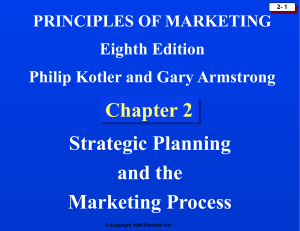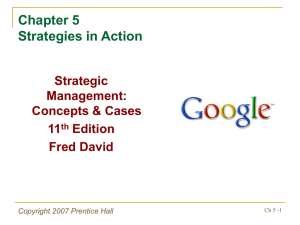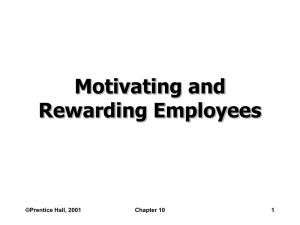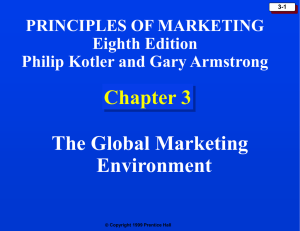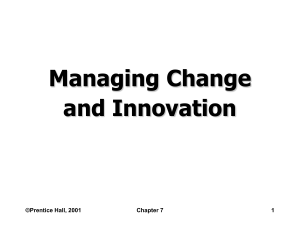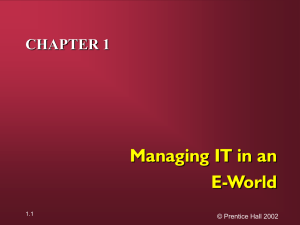Chapter 02 - SaigonTech
advertisement
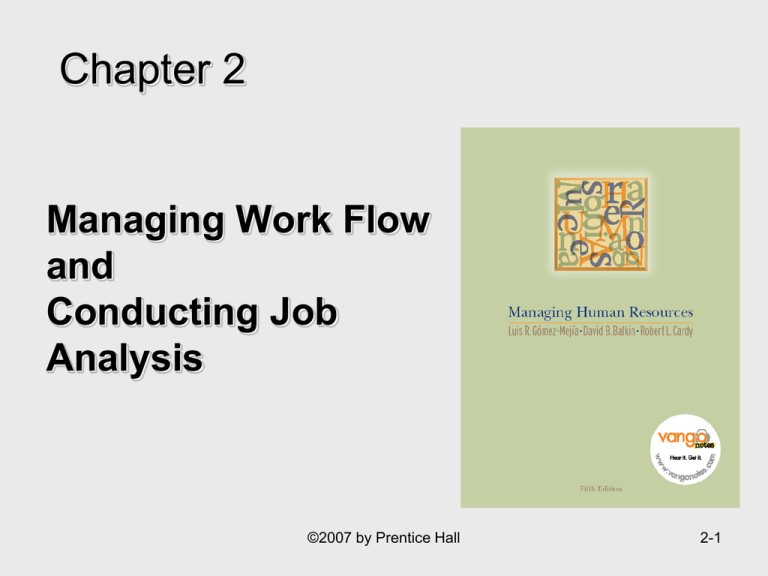
Chapter 2 Managing Work Flow and Conducting Job Analysis ©2007 by Prentice Hall 2-1 Chapter 2 Overview • Describe the different organizational structures and when each is appropriate • List factors influencing worker motivation that are under managers’ control • Conduct job analysis and prepare job descriptions/specifications • Apply flexible work designs which aid in reducing work-family conflicts ©2007 by Prentice Hall 2-2 Work: The Organizational Perspective Strategy and Organizational Structure • Abbey Life Insurance outsourced the claimsadjustment process for its 1.75 million policyholders to Unisys Corp. under a 10-year agreement. Abbey Life saves $80 million over the life of the agreement. Error rates on claims have fallen from 5 to 2 percent, and 95 percent of claims are handled within 6 days, down from 10 days. ©2007 by Prentice Hall 2-3 Work: The Organizational Perspective Designing the Organization Bureaucratic Organization Flat Organization Boundaryless Organization ©2007 by Prentice Hall 2-4 Bureaucratic Organization Figure 2.1 – United States Army Org Chart ©2007 by Prentice Hall 2-5 Flat Organization ©2007 by Prentice Hall 2-6 Boundaryless Organization ©2007 by Prentice Hall 2-7 Work: The Organizational Perspective Work-Flow Analysis – Business Process Reengineering ©2007 by Prentice Hall 2-8 Work: The Individual Perspective Motivating Employees • Two-Factor Theory: internal vs. external • Work Adjustment Theory: fit between needs & abilities and characteristics of job and organization • Goal-Setting Theory: goals help motivated • Job Characteristics Theory: skill variety, task identity, task significance, autonomy, and feedback ©2007 by Prentice Hall 2-9 ©2007 by Prentice Hall 2-10 Designing Jobs and Conducting Job Analysis Job Design • Work Simplification • Job Enlargement and Job Rotation • Job Enrichment • Team-Based Job Design ©2007 by Prentice Hall 2-11 Designing Jobs and Conducting Job Analysis Job Analysis • Who Performs Job Analysis?: HR member, incumbent, manager • Methods of Gathering Job Information: interview, observation, diaries, questionaires • The Uses of Job Analysis: recruitment, selection, performance appraisal, compensation, training, and career development activities • The Techniques of Job Analysis: p.59 ©2007 by Prentice Hall 2-12 Designing Jobs and Conducting Job Analysis Job Descriptions (p. 64-65) Elements of a Job Description 1. 2. 3. 4. Identification Information Job Summary Job Duties and Responsibilities Job Specifications and Minimum Qualifications ©2007 by Prentice Hall 2-13 The Flexible Workforce Core Workers or Contingent Workers Contingent Workers 1. Temporary Employees 2. Part-Time Employees 3. Outsourcing/Subcontracting 4. Contract Workers 5. College Interns ©2007 by Prentice Hall 2-14 Emerging Trends Advantages and Disadvantages of Outsourcing Advantages 1. Provide betterquality people with most current skills 2. Cost savings with economies of scale 3. Preserve company culture Disadvantages 1. Could lose control of important activities 2. May result in losing an opportunity to gain knowledge and information helpful to company processes ©2007 by Prentice Hall 2-15 The Flexible Workforce Flexible Work Schedules • Flexible Work Hours • Compressed Workweeks • Telecommuting ©2007 by Prentice Hall 2-16 Summary and Conclusions • Organizational structures & HR • Motivation • Designing Jobs & Conducting Job Analysis • The Flexible Workforce ©2007 by Prentice Hall 2-17





